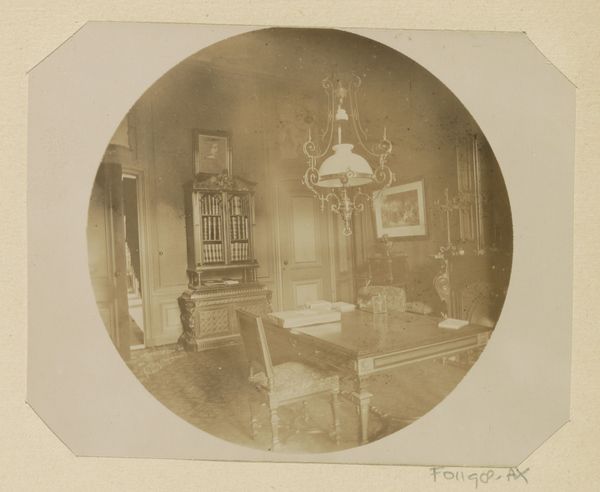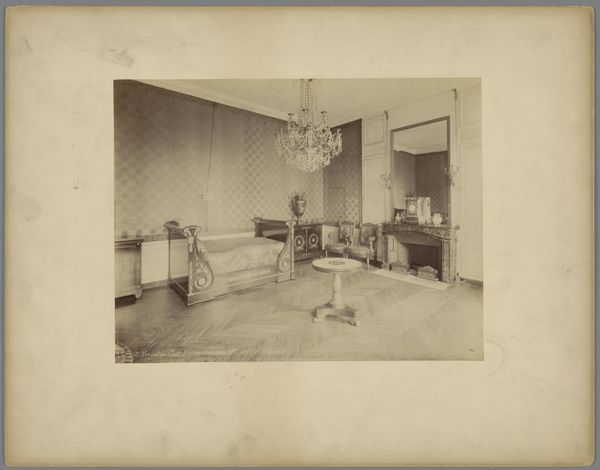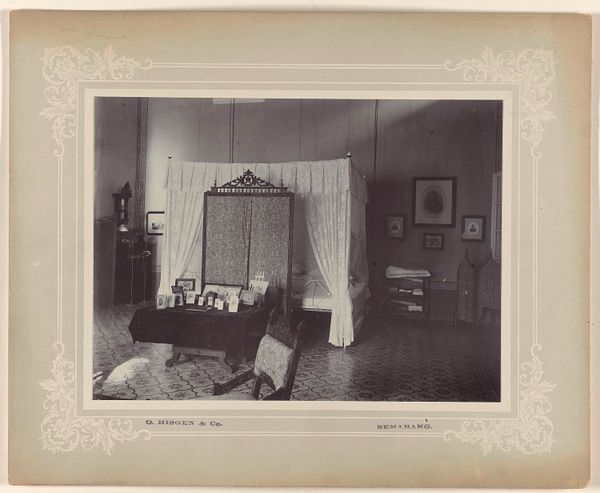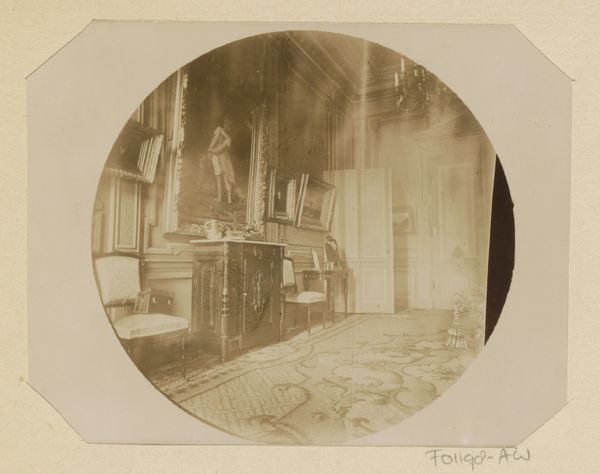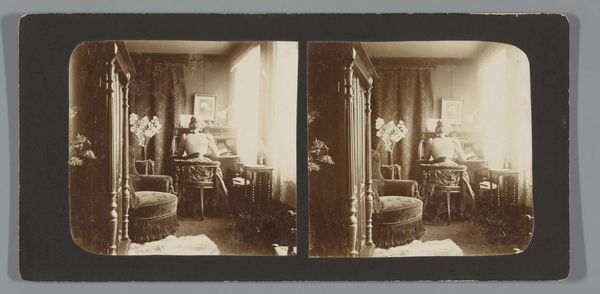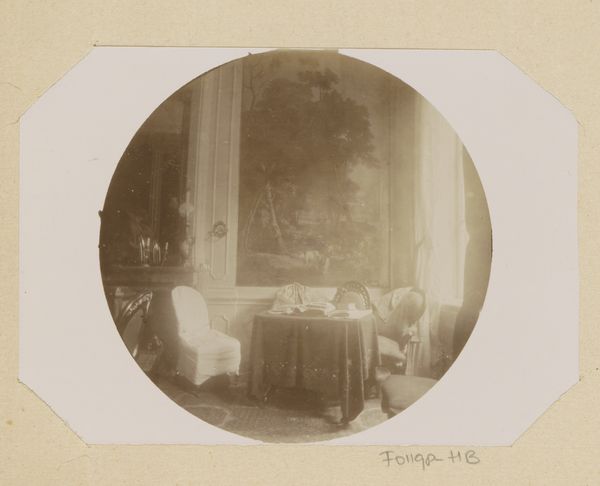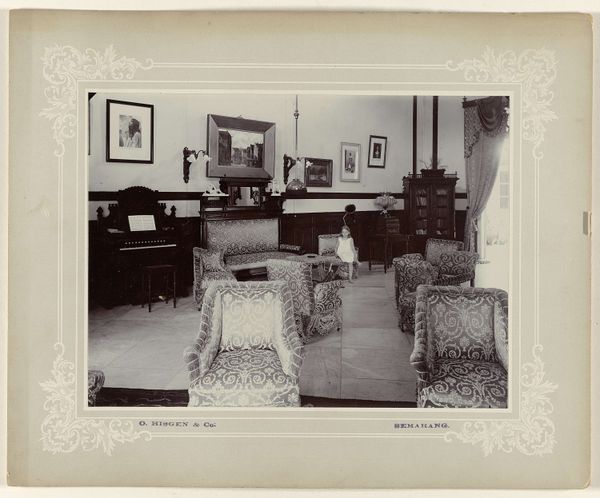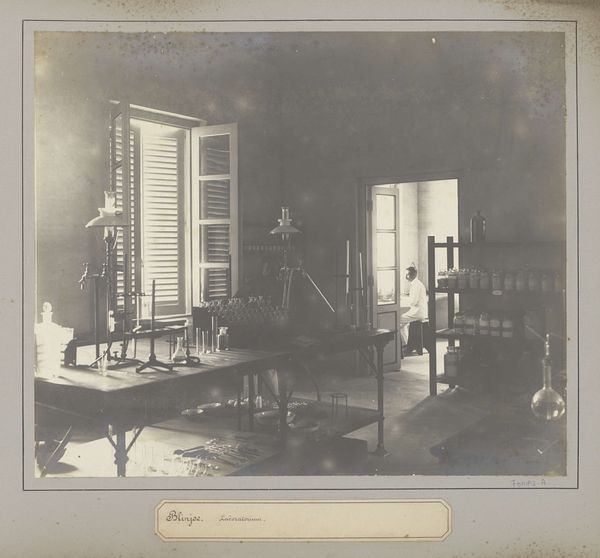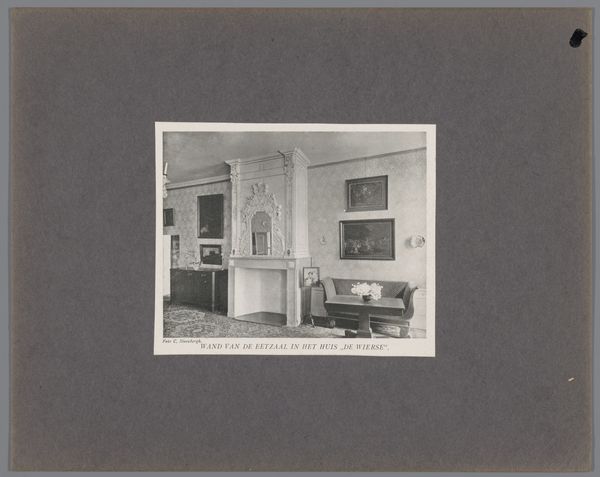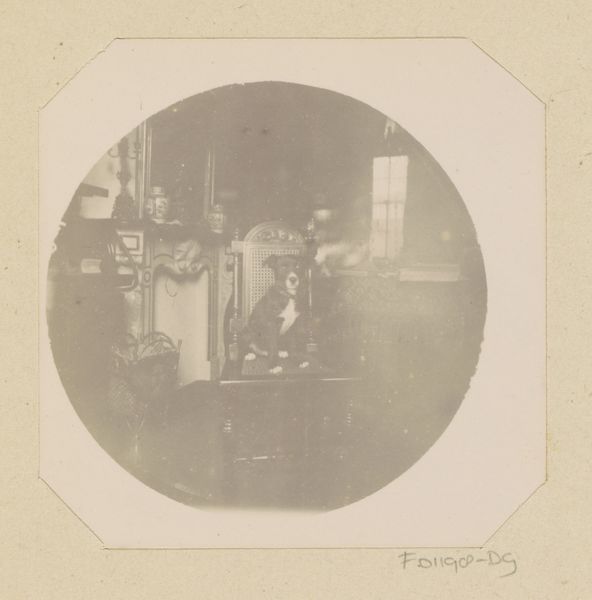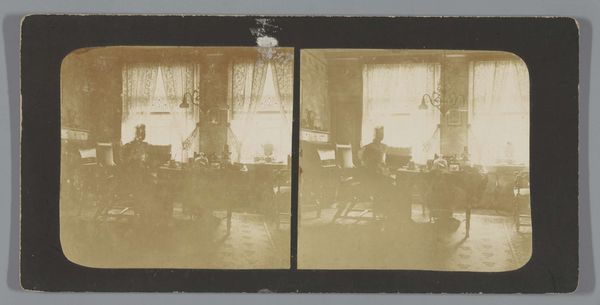
photography
#
archive photography
#
photography
#
historical photography
#
19th century
#
realism
Dimensions: height 90 mm, width 103 mm
Copyright: Rijks Museum: Open Domain
Editor: This photograph, “Interieur van het huis aan Herengracht 258, Amsterdam,” taken sometime between 1889 and 1893 by Johanna Margaretha Piek, presents a genteel interior. I’m struck by its stillness and emptiness. What do you see in this piece, considering its time? Curator: That stillness is key. Think about the rise of photography coinciding with the colonial project. Consider whose interiors were deemed worthy of documentation, and why. Piek, photographing a home on Herengracht, likely documents a space of considerable wealth and power tied to the Dutch East India Company. What does this choice of subject matter reveal about the values being preserved and projected during that period? Editor: So, the quietness isn’t just a neutral observation, it actually conceals a certain... complicity? Curator: Precisely. Look at the almost clinical precision with which she captures the piano, the chairs, the artwork above the mantle. This isn't simply recording reality. It’s constructing a very particular narrative. Who is this house for, and what kinds of activities take place within it? Where does its wealth come from? Are those questions we should be asking of even the most "peaceful" looking artworks? Editor: That's fascinating! I’d initially overlooked the implications. Seeing it as a purely aesthetic study, I hadn't considered its socioeconomic implications or who wasn’t in the room, literally and figuratively. Curator: Exactly, we need to understand whose stories aren't being told. This image allows us to see the ways photographic "realism" served certain powerful interests and how its values shaped how we remember and value the past. It also provokes questions about whether or not we should grant these objects more prominence in collections when its origins may conflict with the values that institutions are meant to champion.
Comments
No comments
Be the first to comment and join the conversation on the ultimate creative platform.
